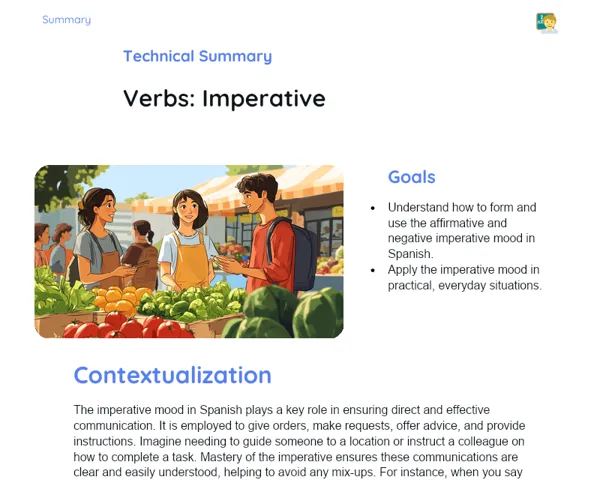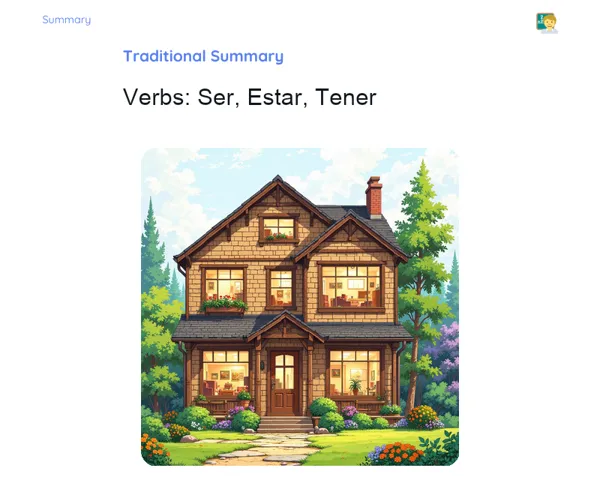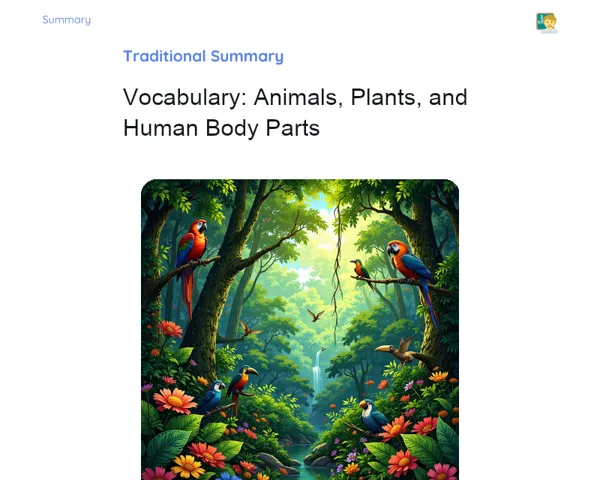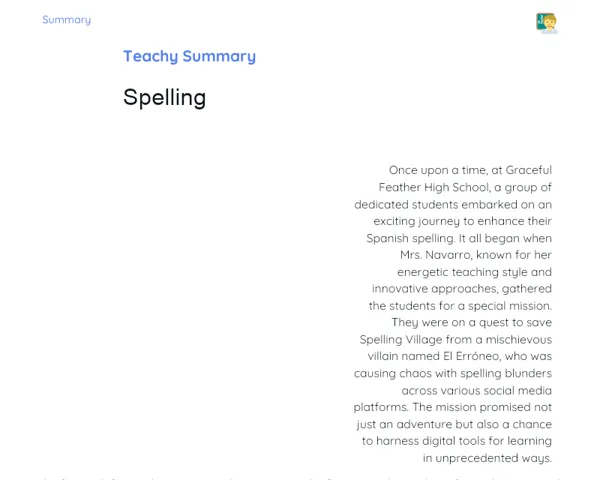Socioemotional Summary Conclusion
Goals
1. Understand and correctly use the imperfect past tense and the past perfect tense.
2. Differentiate between the applications of the imperfect past tense and the past perfect tense.
3. Recognize the significance of verb tenses for effective communication in English.
Contextualization
Have you ever pondered how to narrate your childhood memories in a more nuanced way? 🌟 Verb tenses in English, like the imperfect past and the past perfect, are vital for recounting past stories in a detailed and compelling manner. Imagine being able to share lovely tales of playing cricket with friends every day or recounting events that had taken place prior to another. Let's immerse ourselves in this fascinating world and explore the magic of words! 💬✨
Exercising Your Knowledge
Imperfect Past
The imperfect past is a verb tense that describes habitual or ongoing actions in the past. It's also used to set the scene, as well as to express emotional and physical states that lack a defined conclusion. For instance, when narrating tales from your childhood, you might say, 'When I was young, I played cricket with my friends every day.'
-
Habitual actions: Used for actions that occurred repeatedly in the past. Example: 'I played cricket.'
-
Settings and states: Perfect for creating a vivid image of a past scenario. Example: 'The sky was overcast.'
-
Lack of specific end: Reflects actions that don't have a definitive conclusion. Example: 'I was reading while I waited for my turn.'
Past Perfect
The past perfect tense is used to indicate an action that was completed before another action in the past. This tense is crucial for arranging past events in chronological order, allowing the storyteller to reflect on what had already transpired by a certain time. For example: 'By the time I reached the station, the train had already departed.'
-
Actions before another in the past: Shows that one action took place before another. Example: 'I had left before the rain started.'
-
Structure: Formed with the auxiliary verb 'had' followed by the past participle of the main verb. Example: 'I had spoken to her earlier.'
-
Context of use: Essential for articulating precise timelines in stories. Example: 'When he showed up, I had already completed my work.'
Differences between Imperfect Past and Past Perfect
Grasping the differences between the imperfect past and the past perfect is essential for effective communication and narrative coherence. The imperfect past describes habitual or ongoing actions, while the past perfect refers to actions completed before other past actions. Mastering these distinctions enhances linguistic precision and enriches clarity in expression.
-
Usage: The imperfect past is for habitual or ongoing actions, whereas the past perfect describes an action completed before another.
-
Formation: The imperfect is formed by adding specific endings to the verb stem; while the past perfect uses 'had' + past participle.
-
Context: The imperfect refers to settings, habits, and conditions, while the past perfect relates to sequencing and reflections on past events.
Key Terms
-
Imperfect Past: A verb tense for habitual or ongoing actions and descriptions of circumstances.
-
Past Perfect: A verb tense for actions completed prior to another.
-
Had: An auxiliary verb used in forming the past perfect.
For Reflection
-
How does the correct use of verb tenses influence the clarity and expressiveness of your personal narratives?
-
Reflecting on the last collaborative activity, how did you manage emotions related to teamwork? What challenges did you face and how did you overcome them?
-
Think of a situation that required precise timing. How could a better understanding of verb tenses have enhanced your communication in that scenario?
Important Conclusions
-
We comprehended the applications and formations of the imperfect past and the past perfect, which are essential for accurately portraying actions in English.
-
We learned to distinguish these verb tenses and understood their importance in storytelling and communication.
-
We recognized how these verb tenses enhance expressiveness and clarity, empowering us to share memories and stories more vividly.
Impacts on Society
Mastering verb tenses, particularly the imperfect past and past perfect, significantly enhances our ability to recount past events accurately and engagingly. In a world that is increasingly interconnected, being able to communicate effectively in a second language like English can open up a host of academic and professional opportunities. Moreover, these language skills foster cultural connections, promoting mutual respect and understanding among diverse communities.
Additionally, understanding and skillfully applying these tenses allows us to narrate personal stories in a more compelling and emotional manner, building deeper connections with our audience. The capacity to reflect on past experiences and convey these effectively is a tremendous asset for strengthening relationships and facilitating sensitive communication in various social contexts.
Dealing with Emotions
By using the RULER method, we will begin with recognizing the emotions that surface while studying verb tenses. Take a moment to observe how you feel when faced with difficulty or when achieving a new understanding. Understand the underlying reasons for these emotions by reflecting on why you feel this way—perhaps due to the difficulty of a particular topic or pride in overcoming a challenging verb. Name those emotions accurately, whether it’s frustration, excitement, or relief. Express your feelings appropriately, be it through discussions with classmates or writing in a journal. Lastly, regulate your emotions using techniques like deep breathing or short breaks to maintain balance and ensure your emotions don’t disrupt your learning process.
Study Tips
-
Maintain a verb diary where you jot down examples of the imperfect past and past perfect from books, songs, or films in English. This will reinforce your grasp and recall of these tenses.
-
Practice crafting short personal or made-up stories utilizing the learned verb tenses. This will not only solidify your grammatical skills but also improve your storytelling in a relatable and engaging manner.
-
Form study groups with classmates to discuss and review verb tenses. Teaching each other can enhance understanding and make learning a more collaborative and enjoyable experience.



